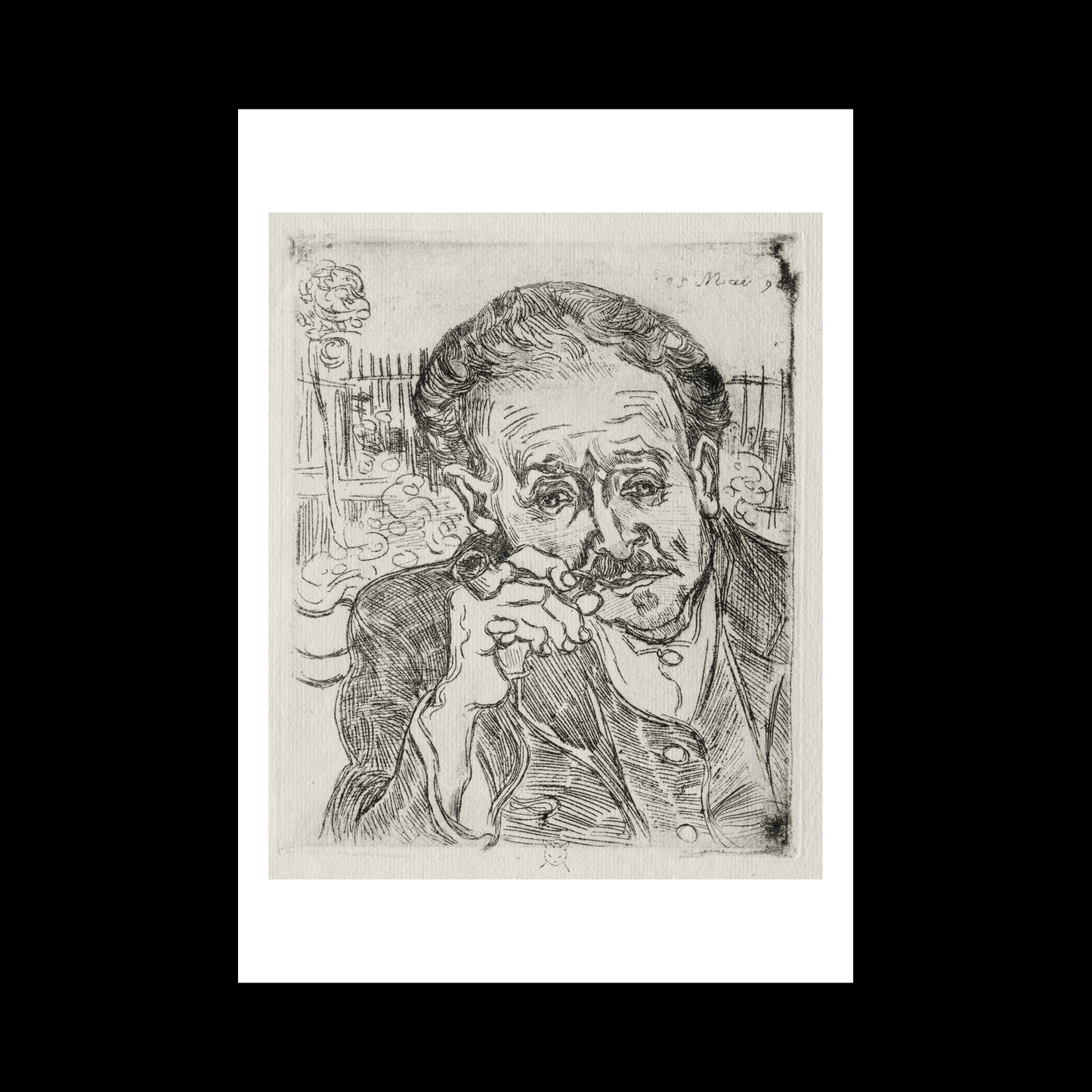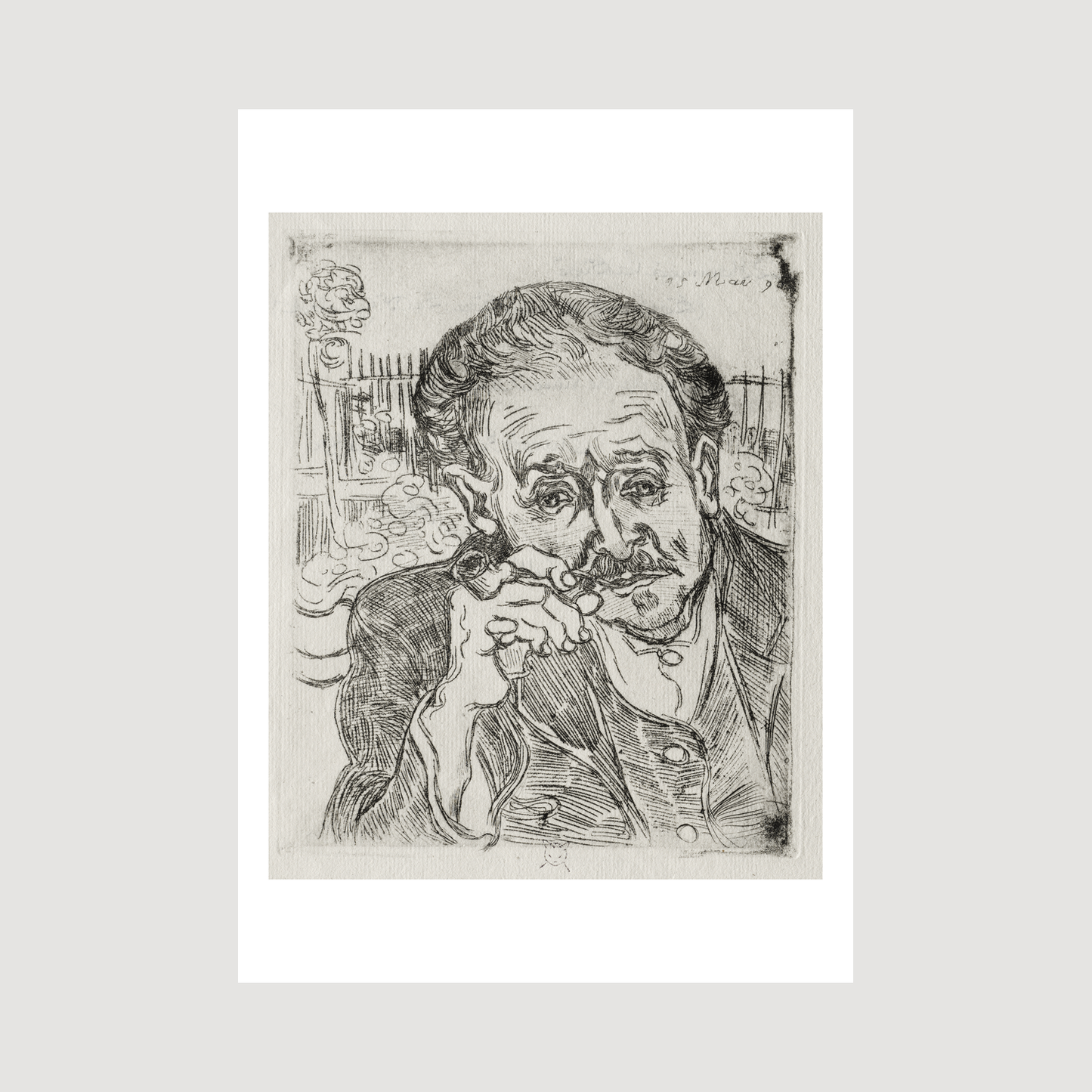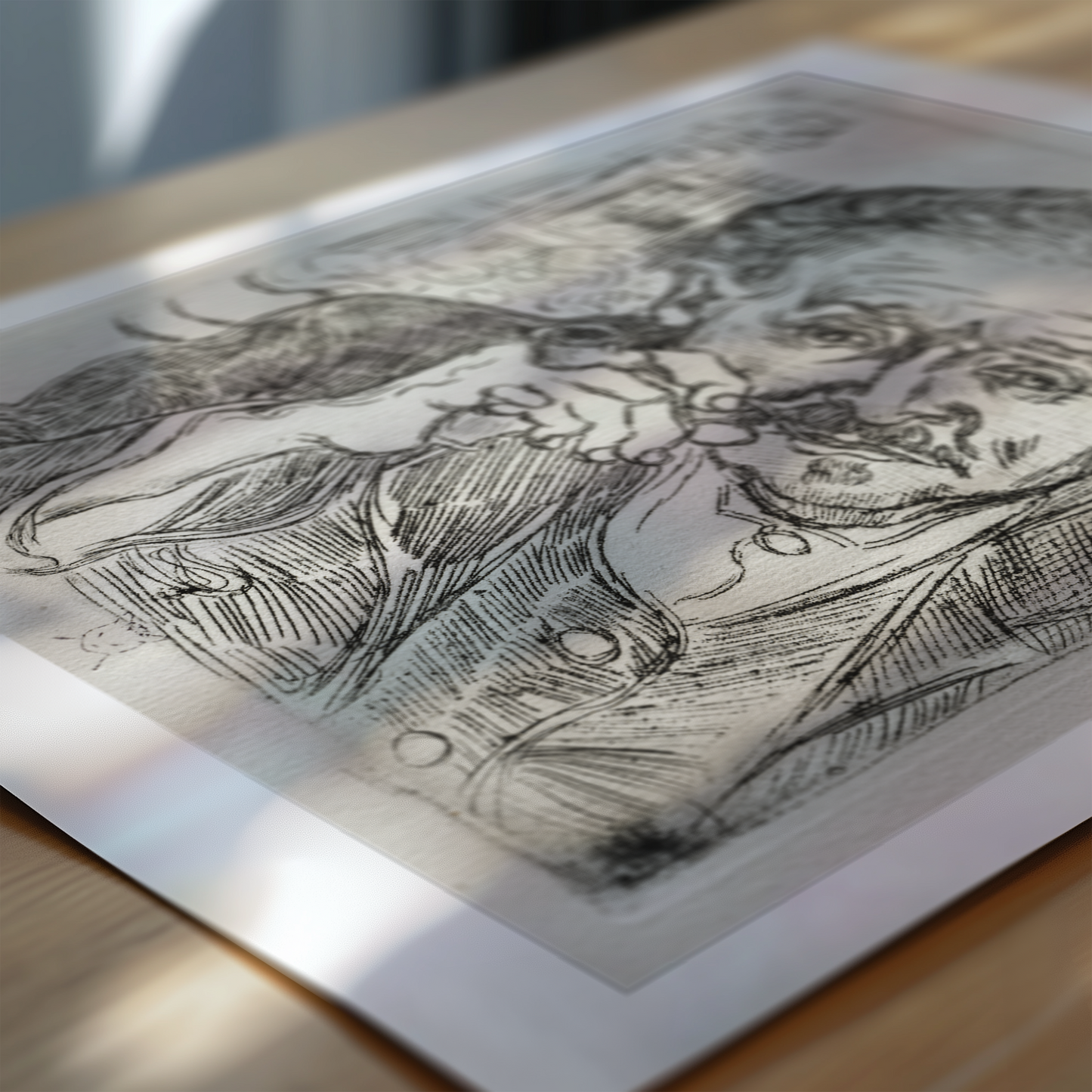1
/
of
6
Dr. Gachet (1890)
Dr. Gachet (1890)
Regular price
£12.45 GBP
Regular price
Sale price
£12.45 GBP
Taxes included.
Quantity
Couldn't load pickup availability
"Portrait of Dr. Gachet" (1890) captures Van Gogh's distinctive expressionistic style through bold brushstrokes and vibrant colours. The painting depicts Paul-Ferdinand Gachet, the homeopathic physician who cared for Van Gogh during his final months. The doctor's melancholic expression, emphasised by his downward gaze and slumped posture, is rendered in Van Gogh's characteristic swirling brushwork and intense blues.
The artwork showcases Van Gogh's emotional depth through its striking composition. Dr. Gachet is portrayed leaning on a red table, his head resting on his right hand, with foxglove plants and medical books beside him - symbols of his profession. The painting's intense colours and undulating forms reflect Van Gogh's unique ability to infuse psychological depth into his subjects, particularly poignant given his own struggles with mental health.
The significance of this portrait lies in its timing and personal connection. Created just weeks before Van Gogh's death, it represents one of his final works and reveals the complex relationship between patient and doctor. Van Gogh wrote to his brother Theo about Gachet, describing him as "something like another brother," though he also noted the doctor's own "nervous temperament." The artist completed two versions of this portrait, each expressing different emotional intensities through subtle variations in colour and brushwork.
The painting exemplifies Van Gogh's post-impressionist technique, with its emphasis on emotional expression over literal representation. His use of complementary colours - particularly the vibrant blues against orange-red elements - creates a powerful visual impact that draws viewers into the subject's psychological state.
View full details
The artwork showcases Van Gogh's emotional depth through its striking composition. Dr. Gachet is portrayed leaning on a red table, his head resting on his right hand, with foxglove plants and medical books beside him - symbols of his profession. The painting's intense colours and undulating forms reflect Van Gogh's unique ability to infuse psychological depth into his subjects, particularly poignant given his own struggles with mental health.
The significance of this portrait lies in its timing and personal connection. Created just weeks before Van Gogh's death, it represents one of his final works and reveals the complex relationship between patient and doctor. Van Gogh wrote to his brother Theo about Gachet, describing him as "something like another brother," though he also noted the doctor's own "nervous temperament." The artist completed two versions of this portrait, each expressing different emotional intensities through subtle variations in colour and brushwork.
The painting exemplifies Van Gogh's post-impressionist technique, with its emphasis on emotional expression over literal representation. His use of complementary colours - particularly the vibrant blues against orange-red elements - creates a powerful visual impact that draws viewers into the subject's psychological state.











